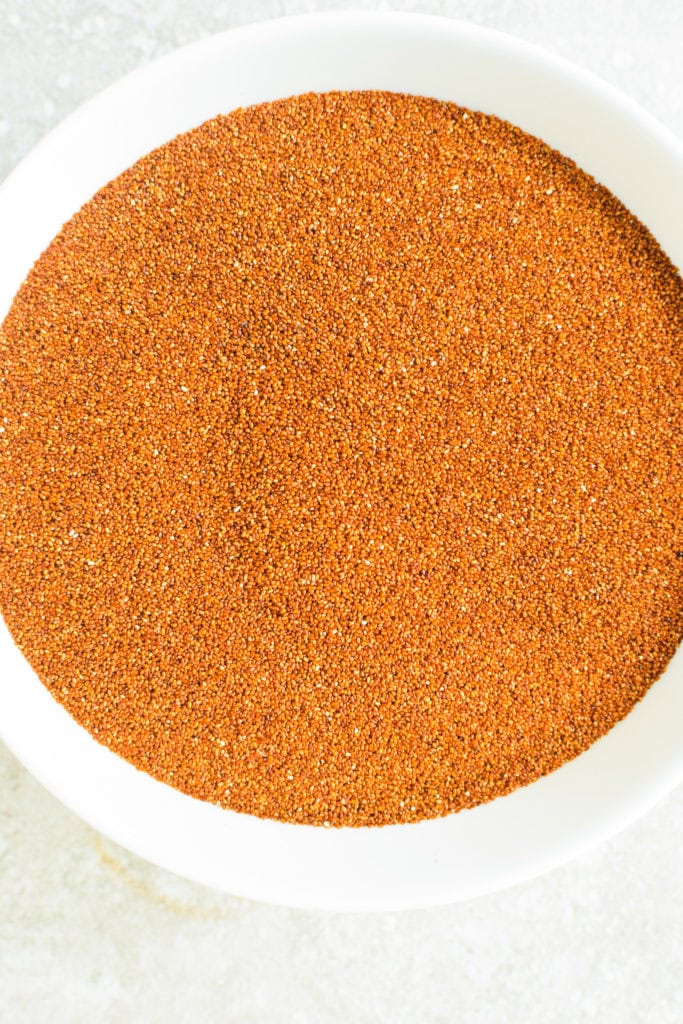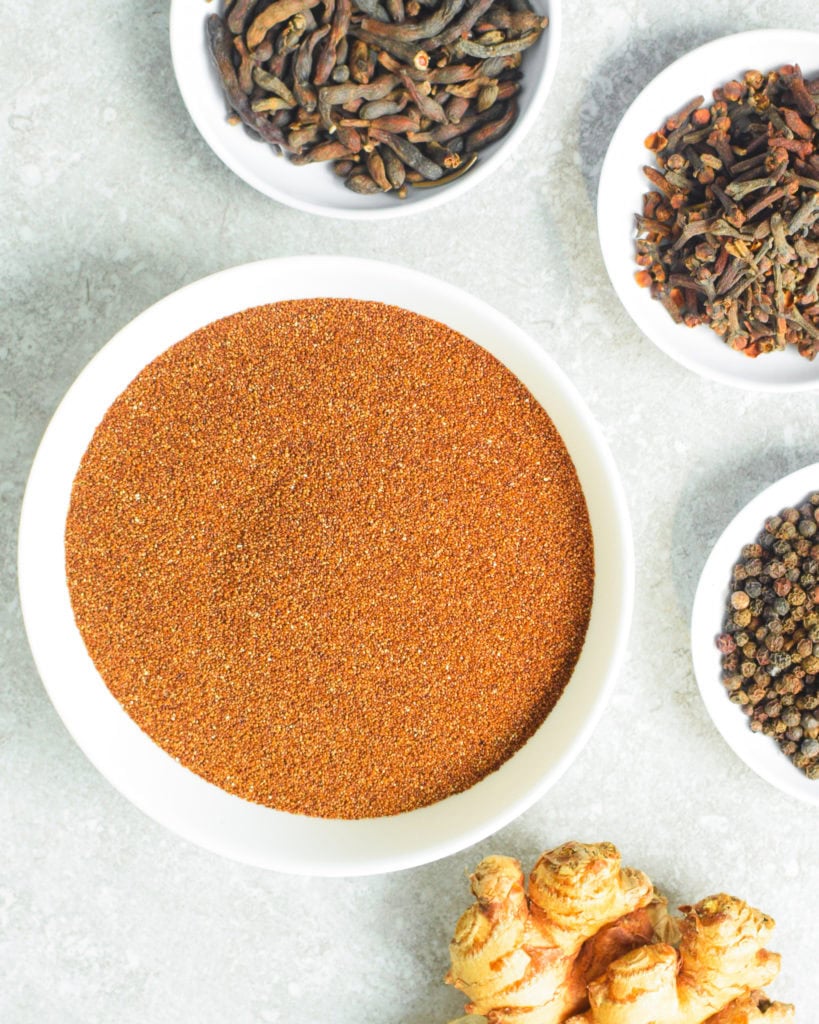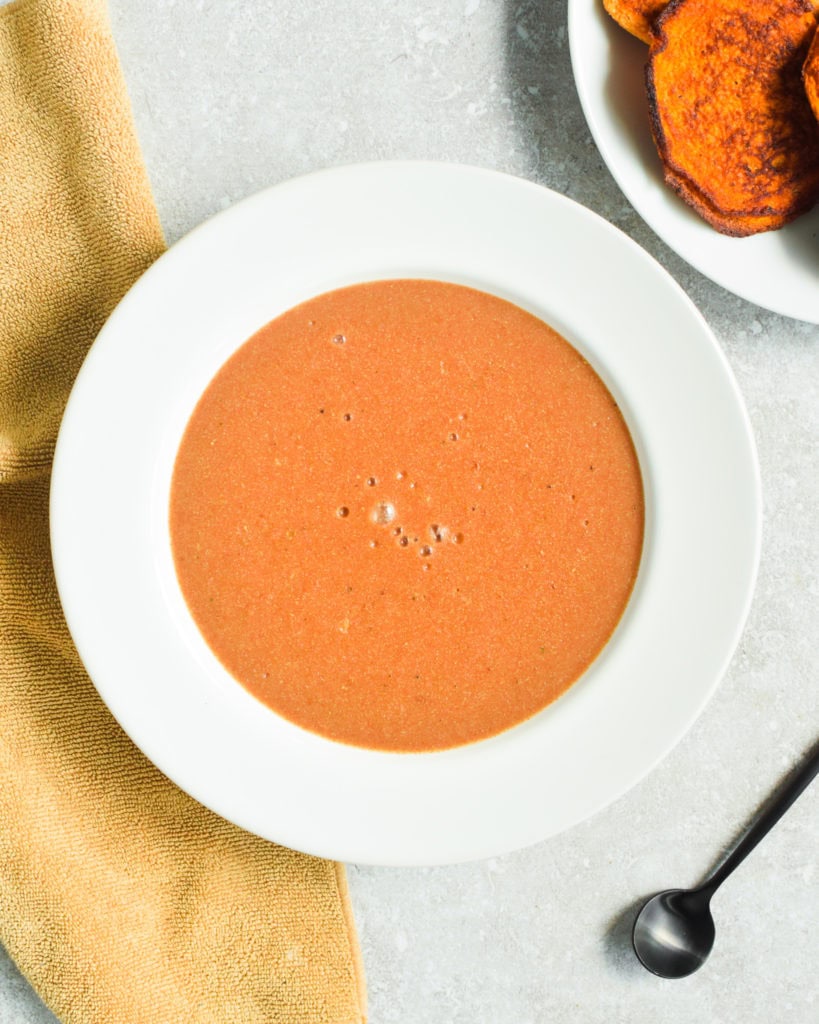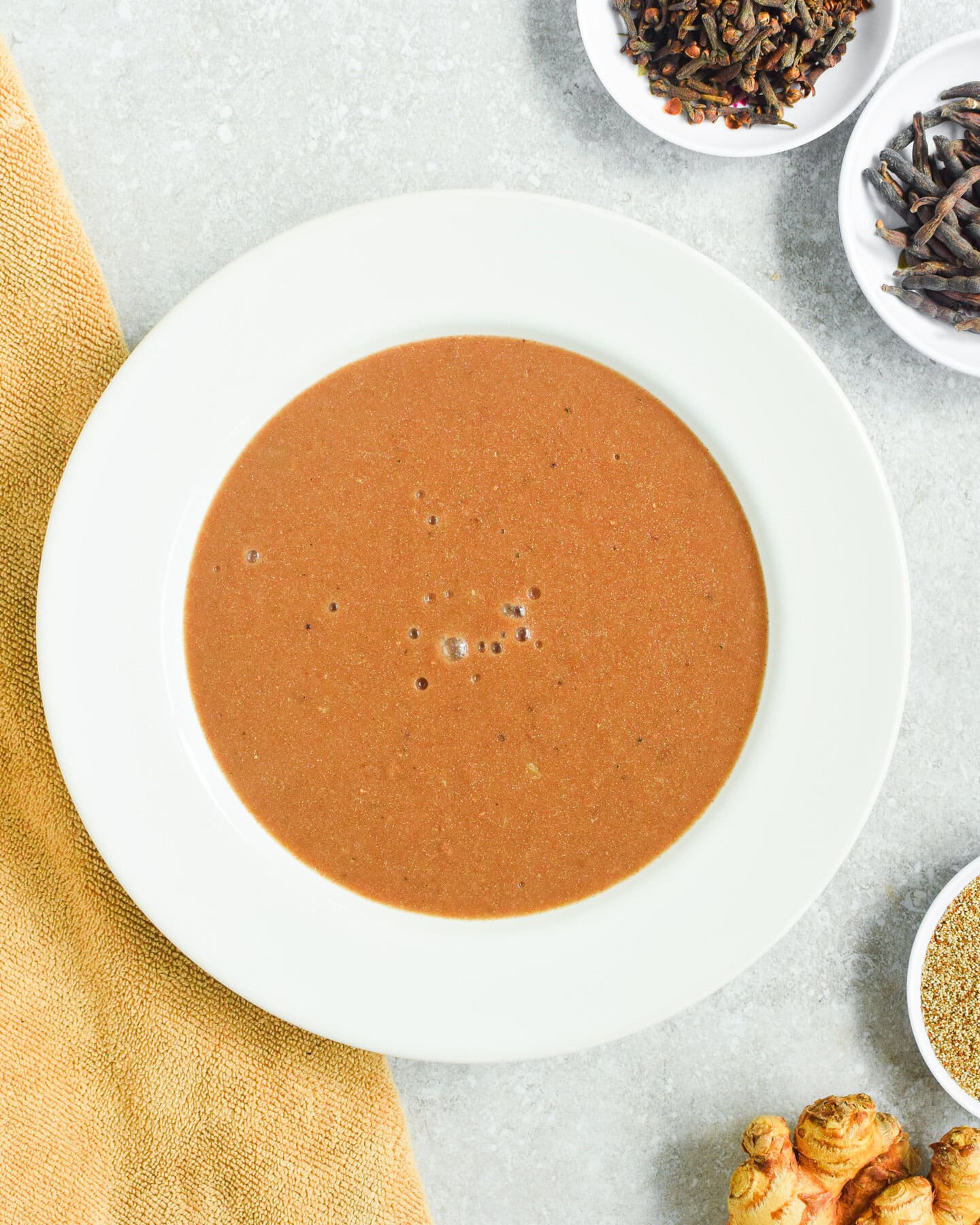Fermented foods are something we love having in Ghana. I am not sure why many of our foods became fermented, maybe to preserve them better, but the unique flavours they provide really complement the foods they are enjoyed with.I think this is what makes Ghanaian cooking quite unique amongst it’s fellow West Africans. I touch a little bit on this in my West African food guide (Click Here) Growing up foods like Hausa Koko were a quintessential breakfast item. Every time I went to Ghana to visit, our uncle will come early in the money with a bag full of hot hausa koko, kose (black eye pea fritters) and tea bread. It has always had a special place in my heart, even till this day.
As fall is approaching, I have been experimenting with fermenting other grains for porridge to try new (to me) grains and still indulge in something so familiar. Hence, the choice of fermented teff porridge. I got this idea knowing that teff is already used for fermented foods like injera. This was a fantastic opportunity to meld ingredients from opposite sides of the African continent, learn about this ingredient while adding my own spin to it.

What is Teff
Something I am realizing is the amazing characteristics of ancient grains in Africa. Many like sorghum, millet, fonio and teff are not only packed with nutrition but have been cultivated to suit the land. Teff, like many of these grains, is a hardy, drought resistant crop that can grow in many harsh conditions. Teff was one of the earliest domesticated crops ranging back as far as 4000BC, cultivated in the Horn of Africa by peoples living in present day Ethiopia and Eriteria. Because of this ancient history, this grain holds a special place in Ethiopian and Eritrean culture. It is one of the most important commodities in Ethiopia. Teff is the main ingredient for the fermented teff pancake called injera that many who have visited Ethiopian restaurants are familiar with. Teff comes in more than one colour, with the most common ones being brown and ivory, each of these look different but have similar nutrition values
Why You Should Eat More Teff?
Aside from being gluten free, this small grain is packed with nutrients. Teff has considerable levels of iron, manganese, phosphorus, zinc and B vitamins. It is a great way to diversify your grains. You do not always have to eat rice or quinoa; teff can be a great substitute.

What You Will Need To Make This Porridge
- Teff flour: I get mine from Berhan (A black owned business here in Canada, ran by an Ethiopian-Canadian family, sourcing their Teff straight from Ethiopia) If you are in Canada please consider buying from them (Click Here) instead of Bob’s Red Mill. I know Bob’s Red Mill might be more accessible but it is better to support black businesses
- Spices: Ginger, Cloves and Black Pepper are the essential in giving this porridge a characteristic spicy, peppery flavour common in many spiced fermented porridges in Ghana
- Authentic African Spices: Calabash nutmeg and Grains of Selim. These are optional but I highly highly recommend it. If you live in Canada, you can purchase them here (Click Here). In the US, you should be able to find them on amazon but i highly suggest checking out a local African store to source these ingredients
How to make fermented porridge
- Grind the spices
- Mix the spices with the teff flour
- Add water
- Ferment for 24 hours in a cool, dry place. A kitchen cabinet works well for
- Let the mixture settle in the fridge for 12 hours: I usually do this overnight
- The next day, boil the water that separated to the top and mix in the paste that settled to the bottom
- Serve with choice of sweetener and some akara or even moi moi

Ingredients
- 2/3 cup teff flour
- 1 large thumb size of ginger 2 tbsp of ginger
- 3 calabash nutmeg** deshelled
- 1 tsp of cloves
- 1 tsp black peppercorn
- 2 grains of selim**
- 3 1/2 cups of filtered water
Instructions
- In a coffee grinder, grind the calabash nutmeg, cloves and peppercorn till smooth.
- Mix in the powder spices with the teff flour in a bowl and combine well
- Crush the ginger into a fine paste
- Add the ginger to the flour mixture and 2 1/2 cup of filtered water into the bowl. I suggest using some of this water to rinse out the coffee grinder or mortar and pestle to get the last bits of spices and ginger paste
- Mix the mixture very well to well combine
- After, strain the mixture and discard the left over chaff
- Set the bowl aside for 24 hours
- After the 24 hours, place the bowl in the fridge overnight to properly separate the liquid at the top from the flour paste at the bottom
- The next morning, pour the water that sits at the top of the bowl into a pot and bring to a low boil with an additional cup of water
- Once the water has come to a boil, whisk in the paste leftover
- Let it cook for 2-3 minutes keeping an eye on it
- Continuously whisk till you get a nice and thick porridge, can take up to 5 minutes . Add more water if you want a more runny porridge
- Serve with sweetener of choice
Notes
Also prepare the mixture at night to have the porridge ready for breakfast at the end
5 Responses
-
[…] You can enjoy this recipe with porridge or plant-based milk. In Ghana, bofrot is eaten with hot chocolate drink or ferment millet porridge. You can try this bofrot with my Fermented Teff Porridge (click here) […]
-
[…] I have a blog post that extensively addresses Teff and its benefits. You can check it out here (click here). Considering all of this, I was really excited to put together this stuffing […]
-
[…] Fermented Teff Porridge (Click Here) […]
-
[…] Just like how people add coffee to a chocolate dessert, so too am I adding teff. It brings out the chocolate flavour so well while adding a nice fragrance to it. It was certainly the perfect addition to this cookie. For more details on teff, nutrition details and vendors, make sure to check out my teff porridge blog post. (click here) […]
-
[…] Fermented Teff Porridge […]


5 Responses
[…] You can enjoy this recipe with porridge or plant-based milk. In Ghana, bofrot is eaten with hot chocolate drink or ferment millet porridge. You can try this bofrot with my Fermented Teff Porridge (click here) […]
[…] I have a blog post that extensively addresses Teff and its benefits. You can check it out here (click here). Considering all of this, I was really excited to put together this stuffing […]
[…] Fermented Teff Porridge (Click Here) […]
[…] Just like how people add coffee to a chocolate dessert, so too am I adding teff. It brings out the chocolate flavour so well while adding a nice fragrance to it. It was certainly the perfect addition to this cookie. For more details on teff, nutrition details and vendors, make sure to check out my teff porridge blog post. (click here) […]
[…] Fermented Teff Porridge […]